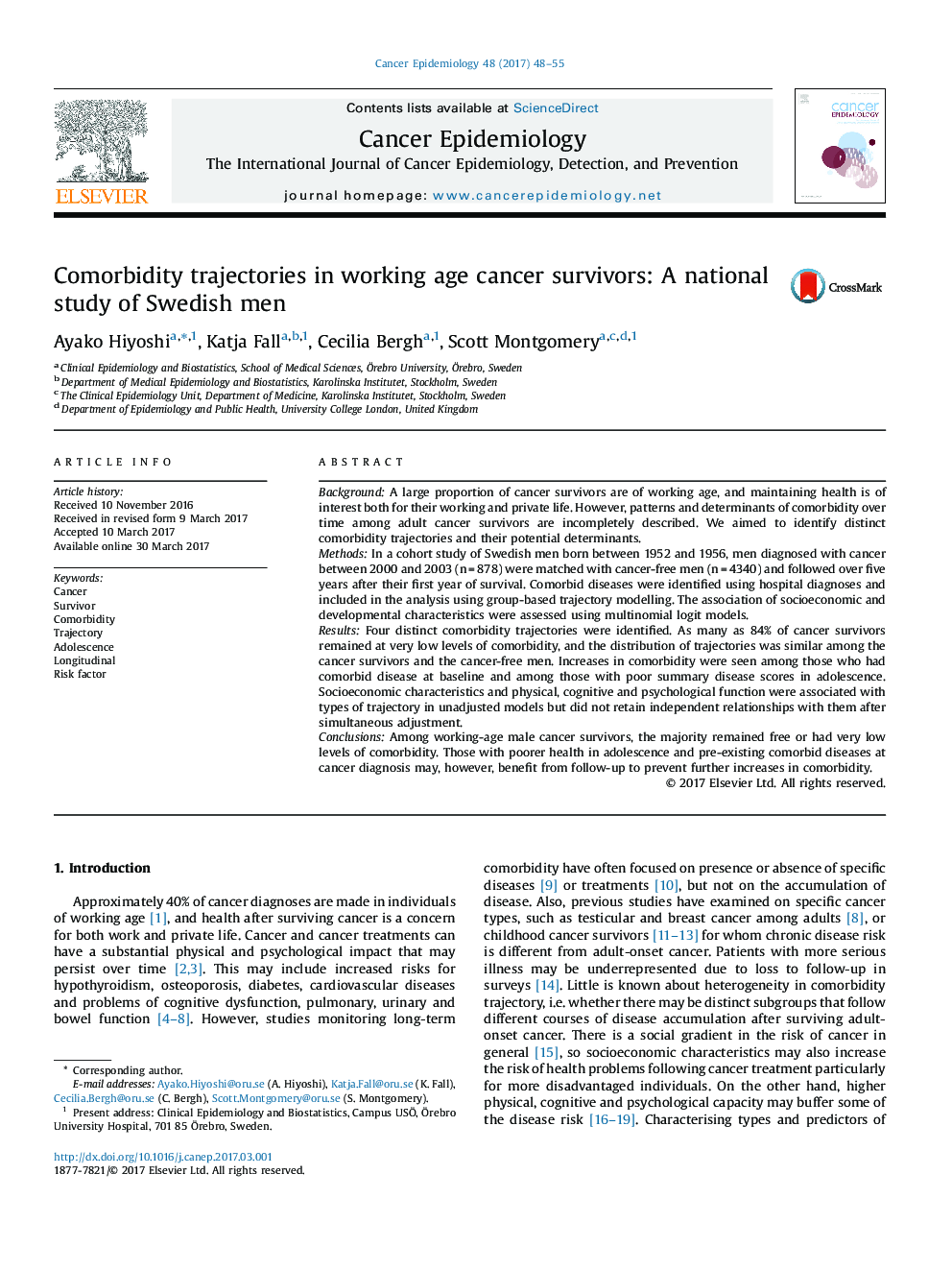| Article ID | Journal | Published Year | Pages | File Type |
|---|---|---|---|---|
| 5524877 | Cancer Epidemiology | 2017 | 8 Pages |
â¢Four trajectories were found in cancer survivors and cancer-free men.â¢Over 80% of men remained free or had low levels of comorbidity in both cohorts.â¢The distribution of trajectories was similar in the two cohorts.â¢Having higher comorbidity after cancer was linked with poor health prior to baseline.â¢Those with higher risk of developing disease may benefit from increased follow-up.
BackgroundA large proportion of cancer survivors are of working age, and maintaining health is of interest both for their working and private life. However, patterns and determinants of comorbidity over time among adult cancer survivors are incompletely described. We aimed to identify distinct comorbidity trajectories and their potential determinants.MethodsIn a cohort study of Swedish men born between 1952 and 1956, men diagnosed with cancer between 2000 and 2003 (n = 878) were matched with cancer-free men (n = 4340) and followed over five years after their first year of survival. Comorbid diseases were identified using hospital diagnoses and included in the analysis using group-based trajectory modelling. The association of socioeconomic and developmental characteristics were assessed using multinomial logit models.ResultsFour distinct comorbidity trajectories were identified. As many as 84% of cancer survivors remained at very low levels of comorbidity, and the distribution of trajectories was similar among the cancer survivors and the cancer-free men. Increases in comorbidity were seen among those who had comorbid disease at baseline and among those with poor summary disease scores in adolescence. Socioeconomic characteristics and physical, cognitive and psychological function were associated with types of trajectory in unadjusted models but did not retain independent relationships with them after simultaneous adjustment.ConclusionsAmong working-age male cancer survivors, the majority remained free or had very low levels of comorbidity. Those with poorer health in adolescence and pre-existing comorbid diseases at cancer diagnosis may, however, benefit from follow-up to prevent further increases in comorbidity.
